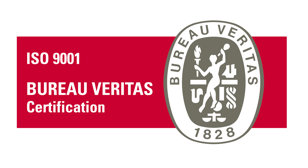Article

After filing: How my patent is granted at the EPO - Obtaining an EP Patent - A crash course for the US applicant #3
Focus: After filing – How my patent is granted at the EPO
Now that I have filed my application at the European Patent Office (EPO), what happens?
First, there is a formal examination. It aims to check that all the information and documents required have been properly submitted. Elements checked include the content of the application, whether the filing and search fees have been paid, whether a translation is required, whether the inventors have been designated and whether representation is required (it will be if the applicant is a US company/resident). The EPO will inform you of any irregularities and allow you to resolve them in a given time period.
In parallel, a European search report is established by a Search Division; this happens whether your application is a direct EP application or a regional phase of a PCT application initially filed in the US (Euro-PCT). The documents considered relevant for appreciating patentability of the invention are cited. The search report is sent to you along with a written opinion on whether your invention can be considered patentable.
When direct filing in Europe, your European application is published 18 months after filing (or the earliest priority date), which triggers a six-month period for you to confirm you want to proceed with examination, to pay examination and designation fees and to respond to the objections raised in the written opinion. Luckily, you will be reminded of the steps you need to take and before what deadline by a notification pursuant to Rules 70 and 70a EPC.
Once the examination has been requested, the Examining Division examines the invention in view of the written opinion and your response to it. As many times as necessary, you may exchange written arguments with an examiner through a series of notifications pursuant to Article 94(3) EPC. This is very similar to Office Actions issued by US examiners, except that is in theory no limit to the number of notifications which can be issued. If the examining division comes to the conclusion that no progress is being made in the written exchange, formal Oral Proceedings under Article 116 EPC will be scheduled. The summons to the oral hearings may be considered similar to a US final office action, but there is no mechanism similar to a Request for Continued Examination like in the US.
Because the oral proceedings may be the last opportunity to argue your case, it is important that, in your responses to the examiner, oral proceedings are requested. On the contrary, if no request is made, the examining division has the right to reject your application outright.
When the examining division considers your invention patentable, they will issue a notification pursuant to Rule 71(3). The examiner will enclose a text in the notification that he considers suitable for grant. This version of the text should be reviewed closely, as the examiner is free to amend some parts of the application. This happens on a regular basis and can affect the scope of the protection sought. Typical examiner’s amendments include the introduction of a two-part form in the claims or comments on the prior art. If you find the examiner’s amendments objectionable, you can contest the text intended for grant and respond to the notification, although this may run the risk that examination is reopened.
Your acceptance of the text intended for grant will consist in filing translations of the claims into French and German (assuming your initial application is in English) and paying the official fees for granting and printing the European patent.
Once these steps are completed, you will receive a decision to grant which will be published in the European Patent Bulletin. You have to be careful here, as any divisional applications need to be filed before the eve of the publication of the decision to grant. Also, the publication triggers a 9-month period for third parties to file opposition. The opposition is a mechanism by which a third party contests the validity of the patent, similar to a Post Grant Review in the US.
You have a choice to validate your patent in selected contracting states, to request unitary effect or requesting both unitary effect and validating the patent in contracting states which are not a part of the unitary effect system.
If you request unitary effect within a month of the publication of the decision to grant, a single patent will be valid for all the states participating in the unitary effect. A single annuity will be due at the EPO for maintaining the Unitary Patent valid.
Otherwise, the granted patent will be divided into a series of national patents in selected countries. Annuities will be due for each country to keep the patent valid.
As an applicant, what should you do?
Trust your EP representatives to remind you of the steps you need to take to get you through to grant without missing a deadline! Do not hesitate to ask them for more details on how to best obtain a patent and, once obtained, what are the best validation options.

























